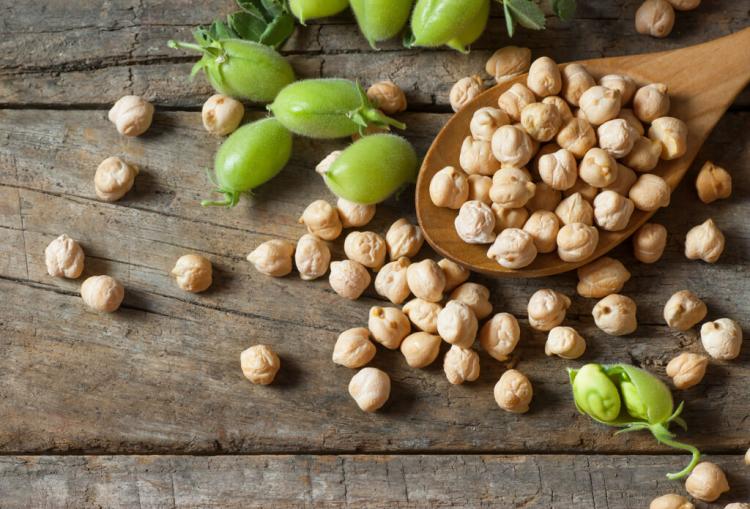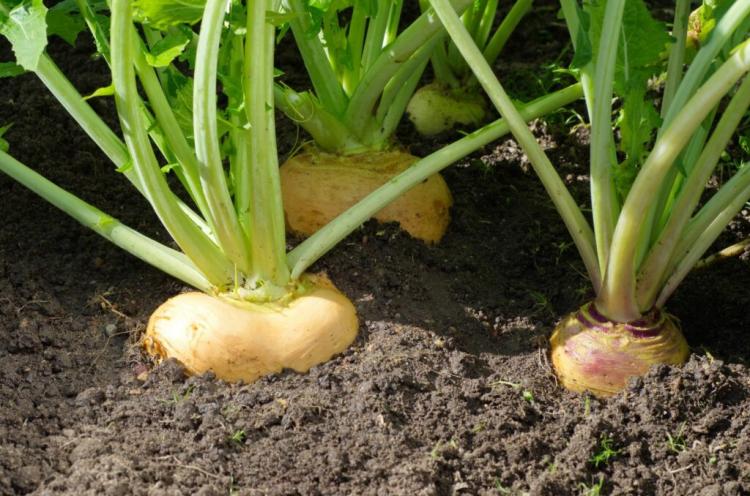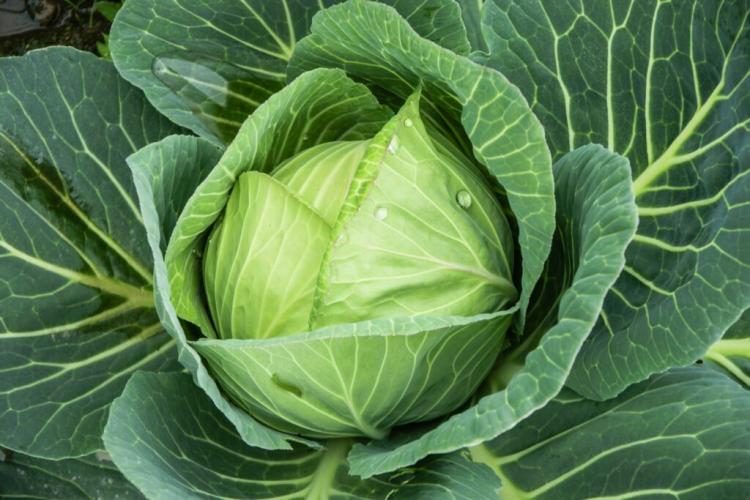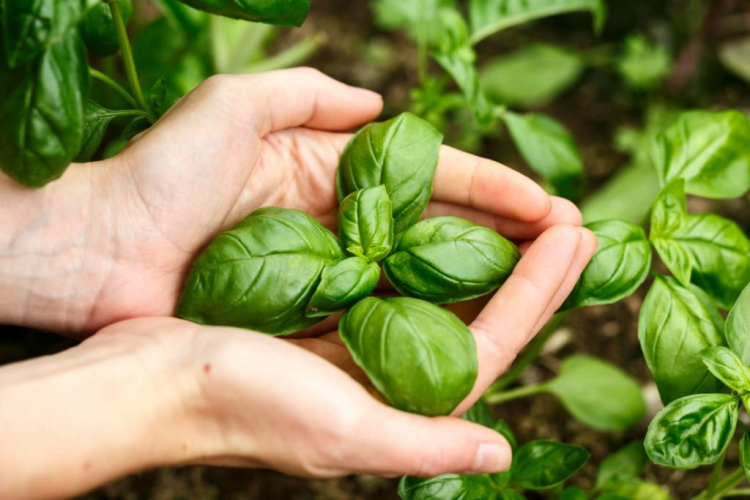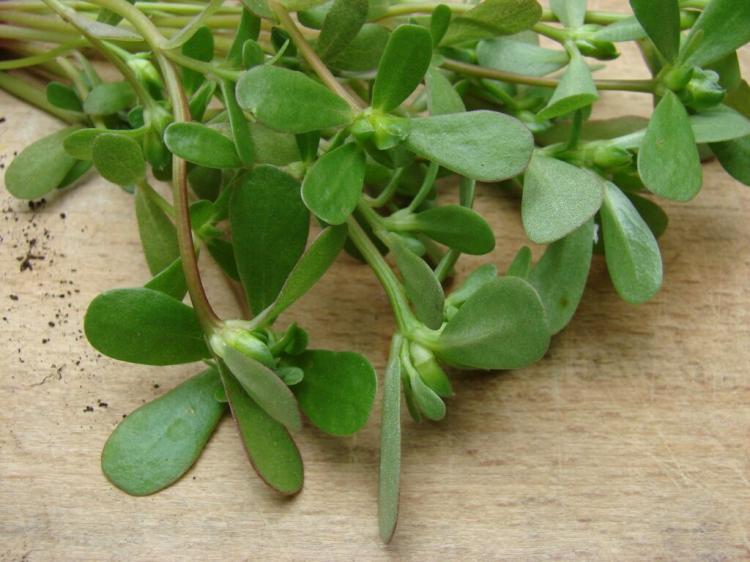Chickpeas: Tips On Planting, Caring For & Harvesting The Funny Pea
Chickpeas are currently more popular than ever. Here you can find out everything about the healthy chickpea and how you can grow it yourself in the garden. Chickpeas ( Cicer arietinum ) are particularly important in the vegetarian and vegan diet because they provide valuable vegetable protein. But the legumes also offer a delicious and welcome change in the kitchen for everyone else. Then why not grow the nutty fruits yourself in the garden? It’s not that difficult at all! We’ll tell you everything you need to know about the origin, different varieties, planting, caring for, harvesting, and using chickpeas.
Chickpeas are a type of plant from the genus of the chickpeas ( Cicer ), belong to the legume family ( Fabaceae ) and the subfamily of the butterflies ( Faboideae ). They are also called real giggles, Roman giggles, Venus giggles, or field peas. The name has nothing to do with the fact that chickpeas are particularly funny. Rather, it comes from Latin. The ancient Romans called the legume “cicer”, which is pronounced like “kiker” and means nothing else than a pea. “Kiker” became “giggle” in German. So today we call the chickpea “pea-pea”.
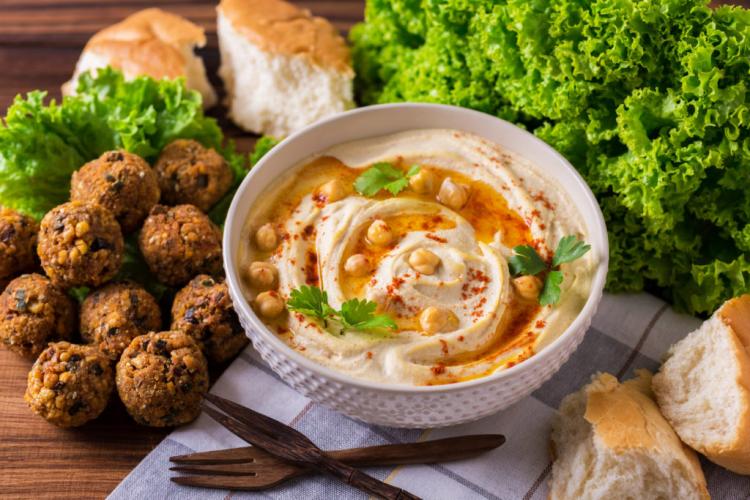
With the pea ( Pisum sativum ) However, the chickpea has little to do. They just both come from the same legume family. We know chickpea from exotic dishes from the Orient or India. Hummus (pureed chickpea puree) or falafel (fried chickpea balls) are well-known chickpea preparations, for example. Fiery and spicy curries with pithy, nutty legumes are also very popular.
Chickpeas: origin and properties
Table of Contents
Chickpeas were already cultivated in Asia Minor around 8000 years ago. This makes them one of the oldest cultivated plants on earth. From there they began their triumphal march into all subtropical regions of the world – to India and the Mediterranean region. The special “pea” came to us with merchant ships in the early Middle Ages. If we still consider it an exotic legume, it is a staple food in many regions of the world. Together with other legumes, chickpeas are particularly valued in India or Mexico for their excellent ingredients. The world’s largest growing areas for chickpeas are in India, North Africa, and Mexico.
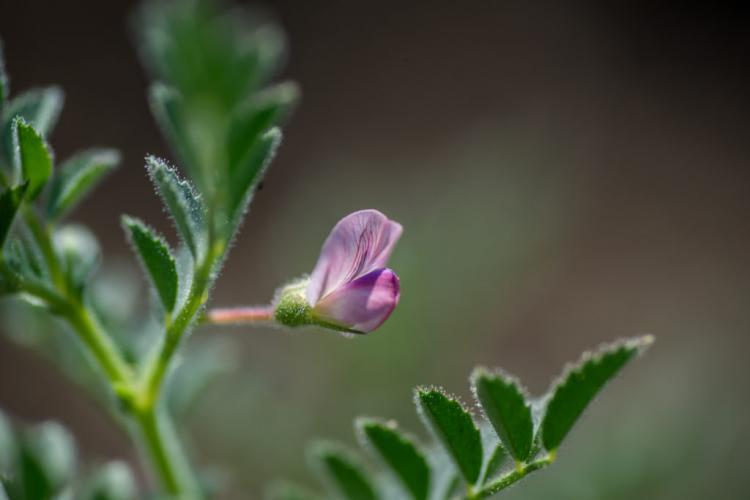
Chickpea is an annual, herbaceous, upright plant with a strong taproot. It can reach a height of 40 to 60 centimeters. The leaves are pinnate unpaired, alternate, and are five to ten millimeters long. All parts of the chickpea plant are covered with small, sticky hairs. The flowers are – depending on the variety – white, red, or purple. This results in thin-skinned pods that are similar to hairy pea pods. Each pod contains one to three irregular, wrinkled seeds with beige, brown, or black skin.
Chickpea varieties
Depending on the climatic conditions in your region, different types of chickpeas are available for cultivation. The choice of variety also determines the size and color of the seeds.
The following types of chickpeas are best known:
- ˈKabuliˈ: This variety is mainly found in the Mediterranean area and Latin America; the seeds are medium to large in size and beige
- ˈAmethystˈ: A popular variety in Australia, it tolerates drought particularly well; the seeds are rather small
- ˈDesiˈ: This variety, especially valued in India, provides small, dark to black seeds
- ˈGulabiˈ: This type of chickpea provides small to medium-sized seeds with a smooth, beige shell
- ˈGarbanzo Black Kabulˈ: This variety comes from the Middle East, the seeds have a black shell
- ˈSarahˈ: This variety from the USA is characterized by its special drought tolerance
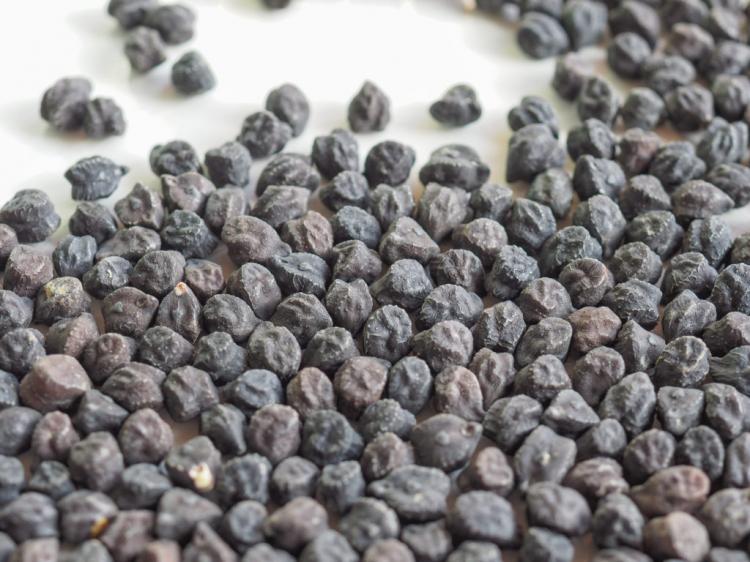
Buy chickpea plants
Since chickpeas are still relatively new to our garden landscape, it is very difficult to find early young plants that are offered for sale. Even on the Internet, there are hardly any chickpea plants available. Fortunately, it is all the easier to grow chickpea plants yourself. You only need suitable seeds for this. The easiest way to do this is to use unroasted chickpeas from the supermarket and grow them from these plants. We will explain exactly how to do this in the next section.
You might so like: Sea Kale: Planting And Caring For The Sea Kale
Planting chickpeas
The best time to plant chickpeas starts in the spring. If you want to prefer young plants indoors, you can start doing so from mid-April. The pulses can then be planted outdoors from mid-May or sown directly. Chickpeas need to be particularly warm and light. The ideal temperature for cultivation is 25 ° C, but it should always be above 5 ° C. The wrong pea cannot tolerate frost and is therefore not hardy. The plant tolerates drought well, but not in too humid conditions. In addition, the soil for cultivation should be loose, permeable, and poor in nutrients.
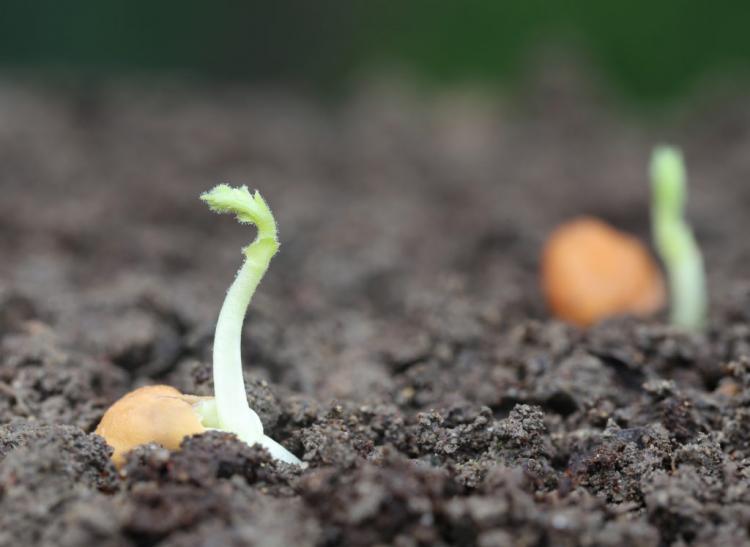
How to plant chickpeas:
- Let the seeds germinate if necessary
- Preferably in pots from mid-April in the house
- Direct sowing outdoors from mid-May
- Loosen up the bed well and remove weeds
- Create seed grooves with a row spacing of 30 cm
- Sowing depth: 5 – 8 cm
- Plant spacing: 20 cm
- Water well
Maintain chickpeas
Since it is frugal and robust, the chickpea requires little care after planting. However, it is important to weed the bed regularly and to keep it free from weeds so that the legume can grow undisturbed. In the next section, you will find out what else to look out for when caring for your chickpeas.
Pour the chickpeas
The special legume is known for its drought tolerance and should therefore be watered too little rather than too much. After sowing, the bed should of course be kept moist throughout. If the chickpeas are larger, you can reduce the watering. Then only water if it has been dry and hot for a long time.
Summary of pouring chickpeas:
- Keep well moist after sowing
- Don’t overwater large plants
- Watering only in long periods of drought and heat
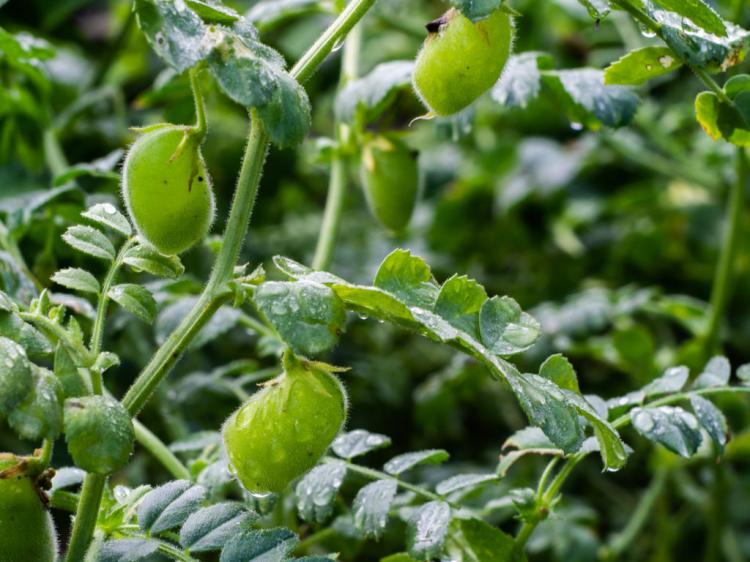
Fertilize chickpeas
Since chickpeas are legumes, they can provide themselves with nitrogen. This works through a symbiosis with nodule bacteria at the roots of the plant. These fix nitrogen from the air and make it available to the chickpeas. The legume therefore usually does not need additional fertilization. However, since a high content of phosphorus is important for the nodule bacteria, you can use fertilization to ensure that there is enough of it.
You might so like: European beech tree: expert tips on buying, caring for & cutting
This works best with organic universal fertilizer, which can supply the soil with sufficient phosphorus, or with a mineral phosphorus fertilizer. Just as important as phosphorus is the right pH level for chickpea. If the soil is too acidic, she doesn’t feel at home at all – all that helps is liming. Adding lime in spring creates optimal conditions for your chickpeas.
Summary of fertilizing chickpeas:
- No nitrogen fertilization necessary
- Phosphorus fertilization in spring with fertilizers with an organic long-term effect
- Limescale in spring in acidic soils
Propagate chickpeas
Chickpeas can easily be propagated from seeds. After harvesting, just save enough seeds for the next year. So you can start sowing with your own chickpea seeds in spring.
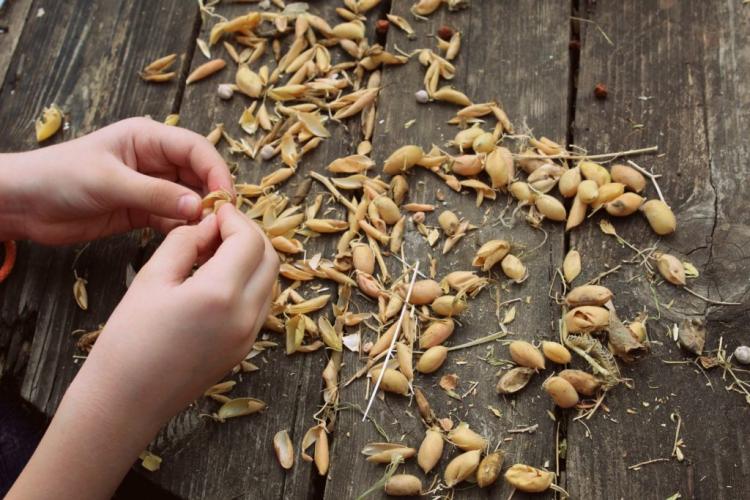
Harvest chickpeas
There are two ways to harvest chickpeas: Either you can use the seeds or the whole, still green pods. Eight to twelve weeks after sowing, the chickpeas begin to be ready for harvest. For the seeds, let the pods turn yellow. Then you can harvest the whole plant and hang it upside down to dry. Some seeds will fall out of their pods while drying, others will have to be pulled out by hand later. Chickpeas can, however, also be harvested and used unripe and green – similar to heirs.
Harvesting chickpeas summary:
- Maturity: 8-12 weeks after sowing
- Let the pods turn yellow
- Harvest the whole plant and let it dry
- Or still harvest green pods
Preserving and storing chickpeas
Chickpeas keep dry for four to five years. But there are other ways to preserve chickpeas. To dry the fake peas, hang the clipped plants upside down in a dry, warm place. If the pods start to open on their own and the seeds fall out, they will be dry enough to store in a dry, cool place.

Another way to preserve the legumes is by freezing. This saves you a lot of time, as the dry chickpeas themselves have to be soaked overnight before they can be used in the kitchen. To get around this, you can soak, pre-cook, and then freeze large quantities of chickpeas. The frozen chickpeas can then be used for cooking immediately. Pre-cooked and then frozen chickpeas can be kept in the freezer for up to six months.
You might so like: Caring for parsley: cutting, fertilizing, and watering
Roasting is also a way to preserve your chickpeas. This works just as well in the oven as it does in the pan. The pre-cooked chickpeas are baked at 180 ° C in the oven or with a little oil in the pan until crispy and then seasoned to taste. This gives you a tasty snack that can be kept for several weeks.
Summary shelf life of chickpeas:
- Dried: 5 – 6 years
- Frozen: Up to 6 weeks
- Roasted: Several weeks
Chickpeas: Ingredients and Uses
Chickpeas are real nutritional miracles. They provide valuable vegetable protein and are also full of minerals. Vegetarians and vegans in particular can replace animal proteins with chickpeas. Even Hildegard von Bingen wrote about the chickpea and recommended eating it regularly because it was warm and pleasant and should even help with a fever.
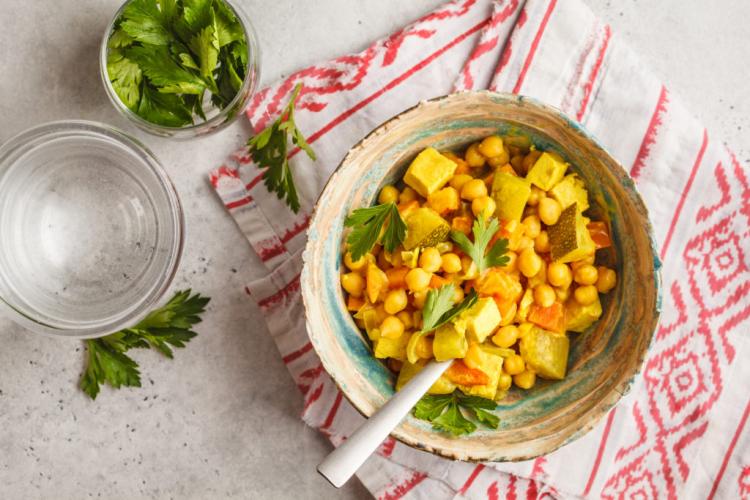
With 100 grams of chickpeas you cover the following daily nutritional requirements:
- 70% folic acid
- 25% iron
- 20% zinc
- 50% magnesium
- 50% calcium
- 50% fiber
Dried chickpeas always need some preparation time before they can be cooked in the kitchen. They should be soaked in water for twelve hours and then boiled for about 30 minutes. Then many great dishes can be conjured up from the nutty legume. The oriental dip hummus is pureed with sesame puree, olive oil, lemon, garlic, and parsley. With onions, tomatoes, ginger, and plenty of curry spices you can conjure up Indian Chana Masala with chickpeas. Cooked chickpeas are also delicious in a wide variety of salads.
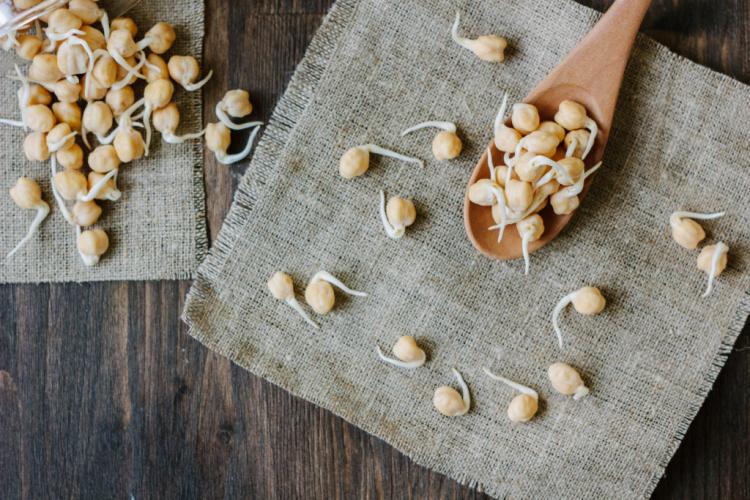
The myth of the poisonous chickpea
Is it potentially dangerous to eat chickpeas because they are poisonous? No, do not worry. Nevertheless, there is something to consider when consuming chickpeas so that the legumes do not harm you. The reason for this is the ingredients phasing, which is actually poisonous, and the bitter substance saponin. Both are found in raw, undercooked chickpeas. Therefore, raw chickpeas in large quantities are actually harmful to health. However, if the legumes are cooked or sprouted, the phasing is broken down and consumption is then harmless.
Summary of the toxicity of the chickpea:
- Raw: Phasin is contained, poisonous
- Cooked: Phasin is degraded, non-toxic
- Germinated: Phasin is degraded, non-toxic
